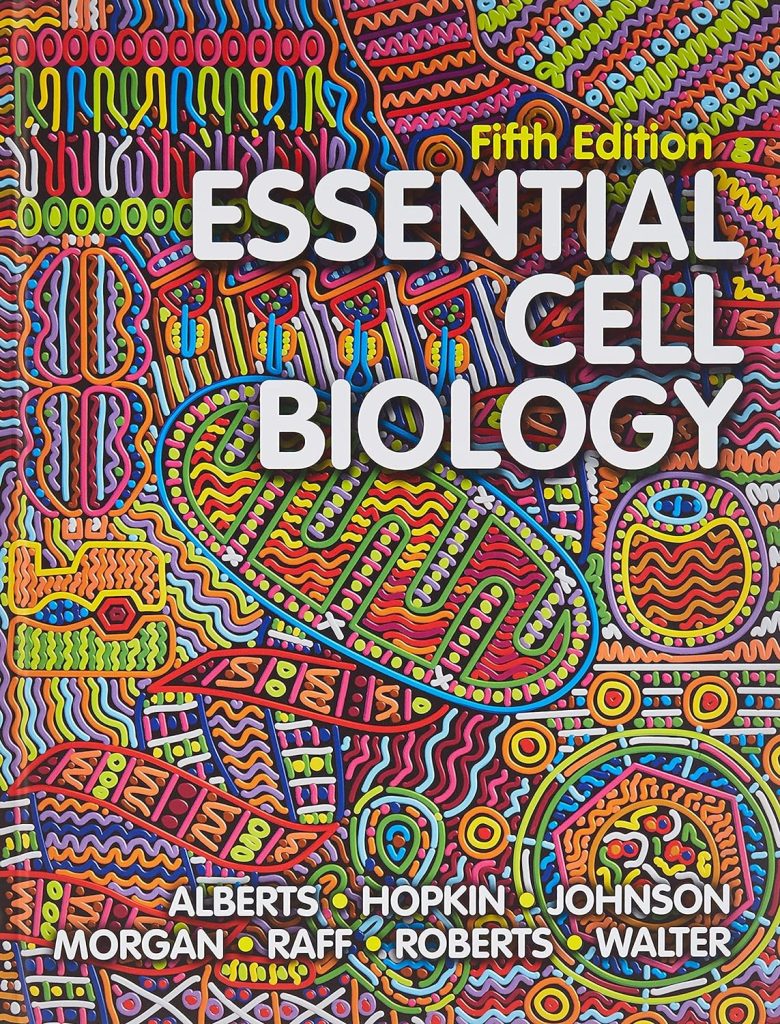Description
Test Bank for Essential Cell Biology 5th Edition By Alberts
Chapter 1
MULTIPLE CHOICE
- Living systems are incredibly diverse in size, shape, environment, and behavior. It is estimated that there are between 10 million and 100 million different species. Despite this wide variety of organisms, it remains difficult to define what it means to say something is alive. Which of the following can be described as the smallest living unit?
a. DNA
b. cell
c. organelle d. proteinANS: b DIF: Easy REF: 1.1 OBJ: 1.1.b Outline, with examples, ways in which cells share a basic fundamental chemistry. MSC: Understanding
- The central dogma provides a framework for thinking about how genetic information is copied and used to produce structural and catalytic components of the cell. From the choices below, select the order of biochemical processes that best correlates with the tenets of the central dogma.
a. replication, transcription, translation b. replication, translation, transcription c. translation, transcription, replication d. translation, replication, transcription
ANS: A DIF: Easy REF: 1.1 OBJ: 1.1.c Explain how the relationship between DNA, RNA, and protein—as laid out in the central dogma—makes the self-replication of living cells possible. MSC: Understanding
DOWNLOAD THE Test Bank for Essential Cell Biology 5th Edition Alberts
Cells: The Fundamental Units of Life | 3
- Proteins are important architectural and catalytic components within the cell, helping to determine its chemistry, its shape, and its ability to respond to changes in the environment. Remarkably, all of the different proteins in a cell are made from the same 20 __________. By linking them in different sequences, the cell can make protein molecules with different conformations and surface chemistries, and therefore different functions.
a. nucleotides b. sugars
c. amino acids d. fatty acidsANS: C DIF: Easy REF: 1.1 OBJ: 1.1.b Outline, with examples, ways in which cells share a basic fundamental chemistry. MSC: Remembering
- Which statement is NOT true about mutations?
a. A mutation is a change in the DNA that can generate offspring less fit for survival than their parents.
b. A mutation can be a result of imperfect DNA duplication.
c. A mutation is a result of sexual reproduction.
d. A mutation is a change in the DNA that can generate offspring that are as fit for survival as their parents are.ANS: C DIF: Easy REF: 1.1 OBJ: 1.1.d Summarize how the processes of mutation and selection promote the gradual evolution of individuals best suited for survival in a wide range of habitats. MSC: Analyzing
- Changes in DNA sequence from one generation to the next may result in offspring that are altered in fitness compared with their parents. The process of change and selection over the course of many generations is the basis of
a. mutation.
b. evolution.
c. heredity.
d. reproduction.ANS: B DIF: Easy REF: 1.1 OBJ: 1.1.d Summarize how the processes of mutation and selection promote the
gradual evolution of individuals best suited for survival in a wide range of habitats.
6. Select the option that BEST finishes the following statement: Evolution is a process a. that can be understood based on the principles of mutation and selection.
b. that results from repeated cycles of adaptation over billions of years.
c. by which all present-day cells arose from 4–5 different ancestral cells.
MSC: Understanding
d. that requires hundreds of thousands of years.
ANS: A DIF: Moderate REF: 1.1 OBJ: 1.1.d Summarize how the processes of mutation and selection promote the
gradual evolution of individuals best suited for survival in a wide range of habitats.
7. Select the option that correctly finishes the following statement: A cell’s genome a. is defined as all the genes being used to make protein.
b. contains all of a cell’s DNA.
c. constantly changes, depending upon the cell’s environment.
d. is altered during embryonic development.
MSC: Analyzing
ANS: B DIF: Easy REF: 1.1 OBJ: 1.1.b Outline, with examples, ways in which cells share a basic fundamental chemistry. MSC: Remembering
8. Which statement is NOT true about the events/conclusions from studies during the mid-1800s surrounding the discovery of cells?
a. Cells came to be known as the smallest universal building block of living organisms.
b. Scientists came to the conclusion that new cells can form spontaneously from the remnants of ruptured cells. c. Light microscopy was essential in demonstrating the commonalities between plant and animal tissues.
d. New cells arise from the growth and division of previously existing cells.
ANS: B DIF: Easy REF: 1.2 OBJ: 1.2.a List the three tenets of cell theory and explain their ramifications for the study of cell biology. MSC: Remembering
DOWNLOAD THE Test Bank for Essential Cell Biology 5th Edition Alberts
4 | 9.
10.
Chapter 1
What unit of length would you generally use to measure a typical plant or animal cell? a. centimeters
b. nanometers
c. millimeters
d. micrometers
ANS: D DIF: Easy REF: 1.1 OBJ: 1.1.a Compare, with examples, some ways in which cells may vary in appearance and function. | 1.2.a List the three tenets of cell theory and explain their ramifications for the study of cell biology. MSC: Remembering
Cell biologists employ targeted fluorescent dyes or modified fluorescent proteins in both standard fluorescence microscopy and confocal microscopy to observe specific details in the cell. Even though fluorescence permits better visualization, the resolving power is essentially the same as that of a standard light microscope because the resolving power of a fluorescent microscope is still limited by the __________ of visible light.
a. absorption b. intensity
c. filtering
d. wavelength
ANS: D DIF: Moderate REF: 1.2 OBJ: 1.2.b Contrast light microscopy, super-resolution fluorescence light microscopy, and electron microscopy in terms of the cell components that can generally be distinguished using each.
MSC: Understanding

Reviews
There are no reviews yet.